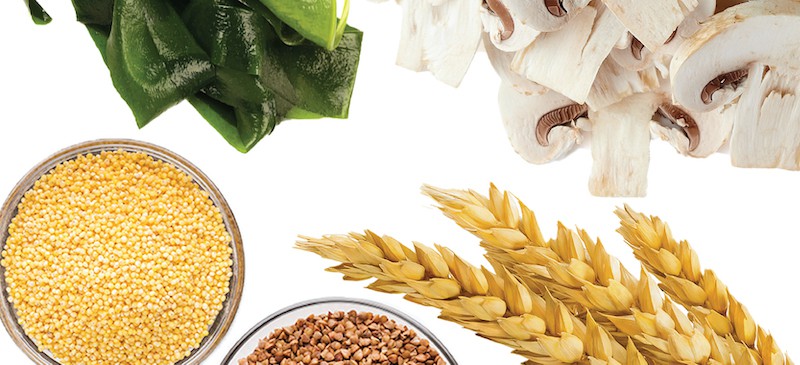This Dr. Axe content is medically reviewed or fact checked to ensure factually accurate information.
With strict editorial sourcing guidelines, we only link to academic research institutions, reputable media sites and, when research is available, medically peer-reviewed studies. Note that the numbers in parentheses (1, 2, etc.) are clickable links to these studies.
The information in our articles is NOT intended to replace a one-on-one relationship with a qualified health care professional and is not intended as medical advice.
This article is based on scientific evidence, written by experts and fact checked by our trained editorial staff. Note that the numbers in parentheses (1, 2, etc.) are clickable links to medically peer-reviewed studies.
Our team includes licensed nutritionists and dietitians, certified health education specialists, as well as certified strength and conditioning specialists, personal trainers and corrective exercise specialists. Our team aims to be not only thorough with its research, but also objective and unbiased.
The information in our articles is NOT intended to replace a one-on-one relationship with a qualified health care professional and is not intended as medical advice.
Beta Glucan: The Fiber that Supports Heart, Gut & Immune Health
April 18, 2020

While basically all high-fiber foods have certain benefits to offer, some stand out due to specific types of fiber they provide. One type of fiber called beta glucan, found in foods like oats and barley, is associated with an impressive amount of health perks — such as protection against metabolic syndrome, cardiovascular issues and obesity.
What Is Beta Glucan?
Beta glucan (often called β‐glucan or BG) is a glucose (or sugar) polymer found in the cell walls of certain plants, bacteria, fungi and yeasts. You’ll find this type of fiber in foods including whole grains, mushrooms, yeasts, seaweeds and algae.
Not only can beta glucans be consumed by eating these types of foods, but you can also obtain them from taking supplements or using topical applications.
Beta glucan benefits are due to the fact that it’s a soluble and fermentable fiber. Soluble fibers have effects including delaying gastric emptying, slowing glucose absorption, absorbing cholesterol particles and stimulating immune cells in the gut.
Health Benefits
What are the benefits of beta glucan (BG)? Studies suggest that BG may help:
- Improve blood glucose control and protect against insulin resistance/type 2 diabetes
- Improve cholesterol levels and blood pressure
- Reduce the risk of obesity due to increasing satiety
- Support the immune system (and potentially having the ability to defend against certain types of cancer, infections and viruses)
- Treat skin conditions, such as dermatitis, eczema, ulcers, sores and wrinkles
- Decrease fatigue caused by impaired immune function or physical/emotional stress
Here’s more about the most researched beta glucan benefits we know of:
1. Can Help Improve Glucose Tolerance
Research has demonstrated that there are many potential beta glucan benefits, but experts recommend foods rich in beta glucans most for their blood glucose control and lipid-lowering effects.
Studies suggest that consuming foods with BG may help reduce the risk of glucose intolerance thanks to their ability to slow glucose (or sugar) absorption after eating a carbohydrate-containing meal. There’s also evidence that eating a high-fiber diet that includes beta glucan and other forms is inversely associated with development of type 2 diabetes.
Those who already have diabetes or metabolic syndrome may also benefit from consuming plenty of fiber and BGs, which may potentially reduce the need for insulin (depending on the individual and their overall diet).
2. Supports Cardiovascular Health
A 2013 study published in Nutrients explains:
Certain cereal fibers have been studied more extensively than others and provide greater support for their incorporation into a healthful diet. β-glucan from oats or barley, or a combination of whole oats and barley, and soluble fiber from psyllium reduces the risk of coronary heart disease.
There’s a good deal of evidence indicating that beta glucan has potential to help reduce total cholesterol and low-density lipoprotein (LDL or “bad”) cholesterol. Most studies have found that consuming three to 10 grams daily has the most effects, especially when BG is consumed as part of a healthy diet that includes whole, unprocessed foods.
3. Can Boost Satiety and Help With Weight Loss
Research indicates that about consuming between four to seven grams per day of beta glucan (or sometimes up to 10 grams) can lead to reduced hunger and help with weight loss. Although not every study has found that eating or taking BGs will result in weight loss, one review concluded that beta-glucans significantly increased satiety and reduced appetite compared with a diet containing no beta glucans.
One study found that consumption of seven grams per day of BG over the course of 12 weeks helped overweight men reduce their body mass, waist circumference and levels of visceral fat.
3. May Have Immune-Boosting Effects
According to emerging research, BGs may have the ability to enhance immune cell pathogenic defenses, meaning they can defend against conditions like colds, influenza (flu), respiratory tract infections, allergies and more.
Much of the existing research on BGs has been focused on the types found in medicinal mushrooms, called protein-bound polysaccharide (PSK), which has been shown to help protect against several types of cancers.
Today, BG is even used to support cancer recovery when patients are using immunotherapy and other cancer treatments. For example, health care providers may give patients BG intravenously to help boost their immune systems when they are battling cancer or HIV/AIDS, or recovering from surgery.
Some experts believe that beta glucans in concentrated doses (not from food sources) can stimulate immune responses that damage cancer cells and help prevent tumors from growing. While research findings look promising so far, much research regarding the use of BGs for disease prevention/treatment still remains to be done.
How Beta Glucans Work
Experts believe that there are various forms of beta glucans found in different foods. Each type may work somewhat differently, although they generally have similar mechanisms of action and effects.
As a polysaccharide and soluble fiber, BG is thought to regulate the immune system as it passes through the intestinal tract and interacts with immune cells. It may prompt the immune system to create more chemicals that help prevent infections.
It seems to work in part by stimulating immune functions, such as activation of monocytes/macrophages and increased production of immunoglobulin, NK cells and killer T‐cells.
BG is also a viscous fiber, as are some other forms of fiber, including psyllium husk and pectin. These fibers can form a gel-like substance in the small intestine, which delays sugar and nutrient absorption following a meal, leading to positive effects on blood glucose levels.
Within the gut, there are also bacteria that cause BG to ferment and produce short-chain fatty acids. This helps with glycogen breakdown by the liver and helps regulate glucose metabolism, offering protection against insulin resistance.
Another way that BG works is by preventing the absorption of cholesterol from food in the stomach and intestines. This can have positive effects on high cholesterol levels, although it isn’t clear if it influences triglyceride levels.
It’s not entirely known how beta glucan consumption leads to increased satiety and reduced hunger, but it’s speculated that it works in several ways: increasing fullness as a result of insulin regulation/lowering postprandial glycemia and due to the production of short-chain fatty acids in the digestive system.
Food Sources
What is the best source of beta glucan? You’ll find beta glucans in foods such as:
- Whole grains (also called cereal grains), such as barley, oats/oat bran, whole/durum wheat, triticale, rye, maize (corn) and sorghum — barley is considered by many to be a top source, followed by oatmeal
- Certain types of fungi and mushrooms, especially “medicinal mushrooms” — examples include Coriolus versicolor (also known as yun zhi), reishi, shiitake, maitake and others
- Yeasts, such as Baker’s yeast
- Seaweeds and algae, such as brown seaweed and Euglena algae
- Beans, peas, lentils
- To a lesser extent, vegetables and fruits, including broccoli, sweet potato, eggplant, apples, strawberries and prunes
Supplements and Dosage
At this time there is not an agreed upon daily requirement of beta glucans. Based on available research, the U.S. Food and Drug Administration and the European Food Safety Authority have concluded that consuming three grams of beta glucans per day can help reduce cholesterol levels by about 5 percent to 8 percent.
According to Today’s Dietician, “One and a half cups of cooked oatmeal or three packets of instant oatmeal provide 3 grams of beta-glucans; 1 cup of cooked pearl barley contains approximately 2.5 grams of beta-glucans.”
Higher doses, between seven to 10 grams per day, seem to provide additional benefits, such as curbing hunger and leading to reduced calorie intake.
In supplement form, and as a topical application, you can find concentrated beta glucans sold as capsules, powders and creams.
The type made from yeast, oats or barley is often used to produce supplements that can be mixed with juice or water. You can use this type once or twice daily.
If BG is being given by IV, a health care provider will determine the dose. A dose between 0.5–2 mg/kg may be given before and after surgery to help prevent infections.
Higher doses between 20–50 mg/day may be prescribed in some situations if someone is at high risk for infection.
Applying cream containing beta glucans to itchy skin may help reduce symptoms, including irritation and flares caused by eczema. Read dosage directions, since the strength of products differ.
You may need to regularly use BGs for six to 12 weeks or longer (up to six months in some cases) to see results.
Risks and Side Effects
Is beta glucan bad for you in large amounts? Whether consumed from foods or supplements, BG has a long track record of safe use.
That said, it’s still not entirely known how beta glucans may affect people with compromised immune systems or autoimmune diseases (such as inflammatory bowel disease, lupus, etc.).
What are the side effects of beta glucan? Consuming too much may lead to digestive issues, skin reactions if applied topically and other reactions.
Side effects can potentially include:
- Skin rash
- Interactions with medications that affect the immune system
- When given by injection, chills, fever, pain at the injection site, headache, back and joint pain, nausea, vomiting, diarrhea, dizziness, high or low blood pressure, flushing, rashes, tiredness, decreased number of white blood cells, and increased urine
If you take any medications that affect your immune system, be sure to speak with your doctor before supplementing with beta glucans, since they may decrease the effectiveness of these medications.
Conclusion
- Beta glucan (often called β‐glucan or BG) is a glucose (or sugar) polymer found in the cell walls of certain plants, bacteria, fungi and yeasts.
- You’ll find this type of fiber in foods including whole grains like oats and barley, mushrooms (especially medicinal mushrooms), yeasts, seaweeds and algae.
- Studies suggest that there are many potential beta glucan benefits, including protecting against/treating insulin resistance, high cholesterol, metabolic syndrome, obesity, and certain types of infections and viruses.
- To support metabolic and heart health, most people should consume between three and 10 grams daily in supplement form.














